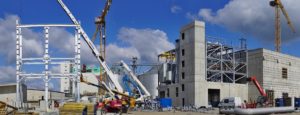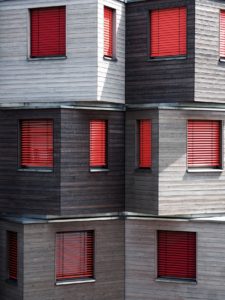Prefabricated or prefab homes are houses pre-built in a factory. Instead of being built on-site, the houses are built in a controlled environment by highly skilled workers. Prefabs are redefining the future of construction, building, and design as they combat housing shortages with shorter assembly time.
Prefabrication for Africa
If you are in Africa, one of the main challenges facing many policymakers is access for the poor to urban development and housing.
With a rising demand for affordable housing, prefab homes have become more popular across the continent. They are relatively less expensive when compared to many existing homes on the market.
Preferred for Construction
In construction, prefabrication has been a buzz-worthy trend over the last few years and there are several good reasons for this.
If you are in the construction business, then you know that job sites can be cramped and busy. They are often located in dense urban environments or sparse untouched rural areas, into and out of which travel is sometimes difficult.
Getting materials and machinery in can be problematic, raising costs and lengthening timelines of construction projects both big and small.
Prefabrication is one possible and promising answer to reducing building costs and easing the construction process overall.
If you’ve been wondering whether it’s smart for you or your company to jump on the bandwagon, well, the short answer is YES.
In addition to competitive prices, a wide range of finishing options that are adaptable to the customer’s preferences and requirements, constructive solutions that will improve the quality of life and fast and efficient building, here are some undeniable reasons why:
Labor shortage? No problem:

Contractors already have difficulty finding labor, but construction still needs to happen.
When on-site construction proceeds piecemeal, it reduces labor productivity even further.
Prefabrication, therefore, helps companies speed up timelines, make the most of the labor they have on-site, increase productivity, and compete in the marketplace.
Cost-effective:
Moving partial assemblies from a factory often cost less than moving pre-production resources to each site.
Plus, as labor productivity rises, costs associated with personnel fall.
Time savings:

Brandt says, “A modular building can go up as much as 50% faster than traditional construction, taking a project from conception to completion quickly and easily—reaching that coveted return on investment fast.”
This is especially important on heavy civil projects that can be very weather-dependent.
When you’re racing a rainy season, time is of the essence and prefabrication can help you maintain tighter timelines
Quality control:

When compared to repeated construction on-site, factory tools can offer added quality assurance.
Moreover, the consistent indoor environments of factories eliminate most impacts of weather on production, while the streamlined manufacture and assembly processes improve job site safety on the whole.
Lower environmental impact:

Constructing pieces quickly offsite results in reduced pollution and disturbance of job sites.
This protects nearby wetlands or protected areas and minimizes the disruption of local flora and fauna.
The controlled, dry environment of modular construction saves on water usage and enables the recycling of scraps and other materials.
Plus, with less on-site traffic and streamlined transportation, fossil fuel consumption drops pretty low.
Better safety and security:
By reducing the time frame of a construction-site, you concurrently reduce the amount of time that the site is vulnerable to vandalism or theft.
Because prefab, modular, or manufactured pieces arrive in much larger “chunks,” the building itself goes up faster, and you can secure it that much sooner.
These benefits are driving enormous interest in prefabrication as a tool for streamlining construction and saving many companies money. Stakeholders, contractors, managers, and laborers all face simpler work timelines and requirements, driving further innovation in the field.
A Little History
Offsite construction is hardly a new concept. In fact, it has been around for thousands of years.
The world’s oldest known engineered roadway “the Sweet Track” was constructed in England around 3,800 BCE. using prefabricated timber sections that were brought to the site rather than assembled there.
The Crystal Palace in London is another early example, made possible by large sheet glass prefabrication methods. With them, architects and builders created a fantastical, sweeping glass structure to house a global exhibition. While it was unfortunately destroyed later by fire, it is memorable for its trendsetting power.
In recent larger commercial projects as well prefabrication has been in trend, such as the Marriott Hotel’s groundbreaking 97-room Folsom Fairfield Inn & Suites in Folsom, California, whose guest rooms and bathrooms were constructed offsite.
Even more recently, the company completed the construction of its Pullman Courtyard Marriott with the help of prefab. The company proudly announces many more to come and sets the stage for other large companies to follow suit.
Residential Construction
Now prefabrication is buzz-worthy for a reason. All signs point to prefabrication as being more than a passing trend.
In some regions, modular construction has gained growing popularity for residential construction.
Experts predict that modular construction will increase by 6% globally by the year 2022.
The UA Builders Group report that 84% of detached homes are built with prefabricated timber elements in Sweden, while the US, Australia, and the UK are at 5%. This is largely due to the shorter build times and greater cost-consciousness of the method.
In Africa and third world countries, a closer look at prefab is being taken to meet their housing shortages and cost constraints.
Prefabrication is already entrenched in the building sphere and has come to stay.
Commercial Construction
In the commercial building sphere, prefabrication shows even more cost-cutting and time-saving promise.
Because commercial buildings frequently rely on repeating steel elements, prefabrication has the potential to make on-site assembly quicker, cheaper, and easier. The same goes for glass panes, which frequently make up a huge amount of exterior surface area on skyscrapers, warehouses, and apartment buildings.
Frankly, traditional on-site construction just isn’t sustainable for companies looking to grow and compete. That’s where prefabrication comes in.
Big Brands are Going Modular
Apart from Marriott in their Folsom Fairfield Inn & Suites, there is a whole list of brands jumping on board for modular buildings.
Google has joined modular building techniques.
Their rationale? Google loves to innovate, and modular structures enable endless opportunities when it comes to redesigning their site over time.
Yale has also joined in the use of prefabricated construction in recent years.
In order to provide temporary space during the construction of new campus buildings, the university employed modular spaces for the Political Science department. The result was room to teach and research while construction occurred, reducing disruption of academic life.
Who doesn’t love a good drive-through?
Starbucks and McDonald’s have both turned their designers to creating small, intensive-use buildings that rely on pop-up construction methods to save time and money.
Whether using prefabrication for just a section of a new project, or the vast majority, the benefits are undeniable.
Over time, as builders combine this fast-growing approach with new and innovative methods, we are bound to see even more productivity and cost savings.
For now, it’s time to jump on board before you’re left behind.







